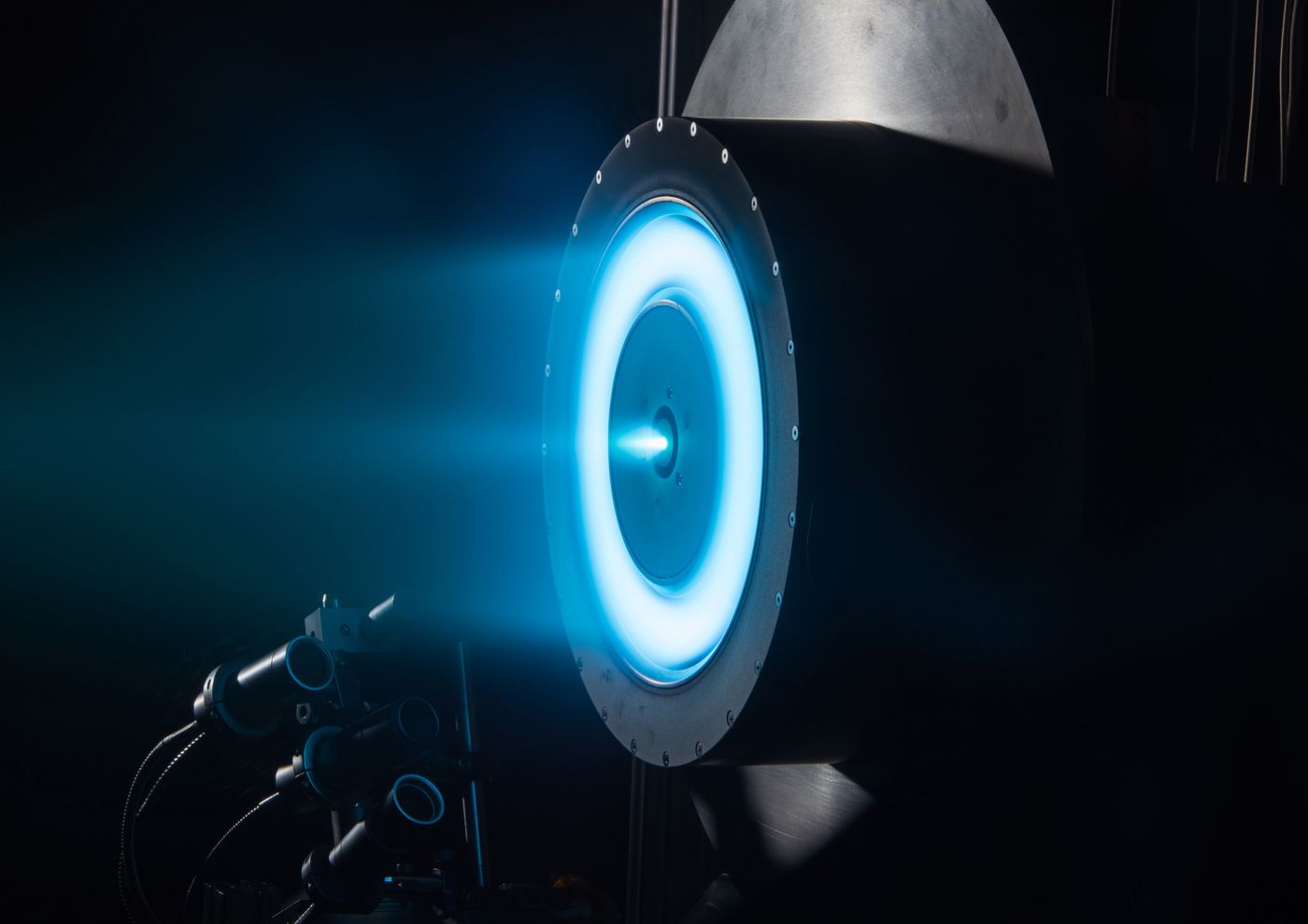Improved Electronic Propulsion Could Be Used on Interplanetary Missions
An example of solar electric propulsion. (Credit: NASA)
In a recent study presented at the AIAA SCITECH 2023 Forum, a team of researchers at the University of Michigan (U-M) examined how a widely used electronic propulsion system in Earth orbit known as Hall thrusters can be designed to generate larger amounts of thrust, but with smaller thrusters. This study challenges a long-standing belief that Hall thrusters needed to be large to produce the necessary amount of thrust, but this could help open the doors for better thrusters to be used for interplanetary missions throughout the solar system.
"People had previously thought that you could only push a certain amount of current through a thruster area, which in turn translates directly into how much force or thrust you can generate per unit area," Dr. Benjamin Jorns, who is a U-M associate professor of aerospace engineering, and a co-author on the study, said in a statement.
For the study, the researchers successfully ran a 9-kilowatt Hall thruster up to 45 kilowatts while preserving approximately 80 percent of the thruster’s efficiency, which resulted in an increase of almost 10 times the amount of force generated per unit area.
"We named our thruster the H9 MUSCLE because essentially, we took the H9 thruster and made a muscle car out of it by turning it up to 11 -- really up to a hundred, if we're going by accurate scaling," Leanne Su, a PhD student in aerospace engineering at U-M, and lead author of the study, said in a statement.
The researchers were able to use this thruster to match the thrust of a much larger 100-kilowatt-class X3 Hall thruster, and believe their thrusters could allow future crewed Mars missions to reach the Red Planet, even from the far side of the Sun.
Sources: AIAA SCITECH 2023 Forum, University of Michigan News
As always, keep doing science & keep looking up!









